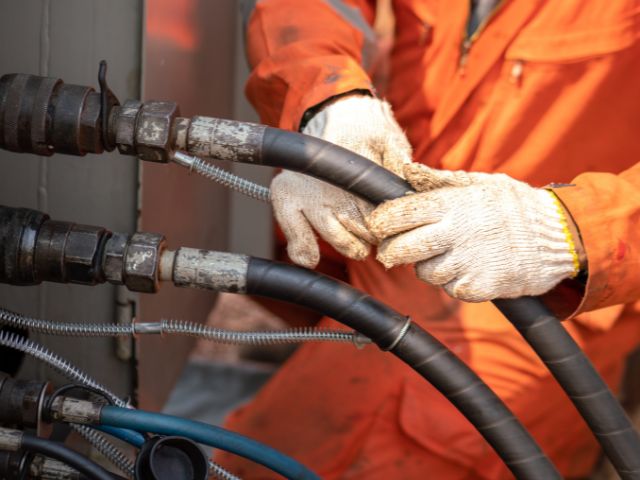
 business
business 
Industrial hose inspections are a vital part of hydraulic hose maintenance. If you need to commence an industrial hose inspection, we’ve put together a brief list of crucial things to check to ensure your hydraulic hose system is sound.
The primary purpose of an industrial hose inspection is to find any minor leaks and cracks before they cause major hose failure. Inspecting all the fittings and connections is a good place to start—look for any signs of cracking or drying.
Searching for minor fractures in a hose can be challenging, as they can almost be imperceptible to our eyes, but there are a few strategies to spot them. An on-site hydrostatic pressure test is a valuable tool for maintenance as it makes it much easier to spot minor leaks before they become more significant faults.
Another way to find fluid leaks in a hydraulic hose inspection is by looking for seepage. Seepage is when there’s dampness or puddles around the hoses; the hose or fittings look noticeably dry and brittle.
When there’s smoke, there’s fire—when there’s seepage, there’s leaks. The fittings are especially common sources for seepage, so check them closely. If they feel damp or brittle, like they regularly become damp and dry, it’s likely a loose fitting or minor crack.
The grounding wires are one thing to check for during an industrial hose inspection that is too often overlooked. They can be easy to forget about, but industrial hose grounding is important for the safety of the entire workplace.
Without proper grounding, static electricity can quickly build up in hydraulic hoses, becoming dangerous to the touch for employees and an ignition source danger for fires. Double-check your industrial hose system’s grounding regularly to ensure industrial workplace safety.
Anyone familiar with industrial hose installation knows there’s a strict bend radius for hydraulic hoses for a reason—preventing the hoses and fittings from cracking under substantial stress. When a hose gets twisted or bent into a kink, it can block the fluid from flowing and cause pressure buildup.
This pressure and fluid must go somewhere, typically showing in cracked hoses and fittings. Sometimes, kinks and twists can appear from nowhere, so double-check the entire route of the hydraulic hoses to ensure every hose is within its bend radius.
Another common culprit of industrial hose failure is contact abrasion with other equipment or materials. During operation, hydraulic hoses can vibrate and move, and if it rubs against another surface repeatedly, it can quickly cause abrasion of the hose and lead to cracks and failures.
Ensure the hoses aren’t contacting any other materials in the route, and look for any signs of abrasion on the hoses. If there are signs of contact abrasion, move the hoses or the source of friction.
24World Media does not take any responsibility of the information you see on this page. The content this page contains is from independent third-party content provider. If you have any concerns regarding the content, please free to write us here: contact@24worldmedia.com